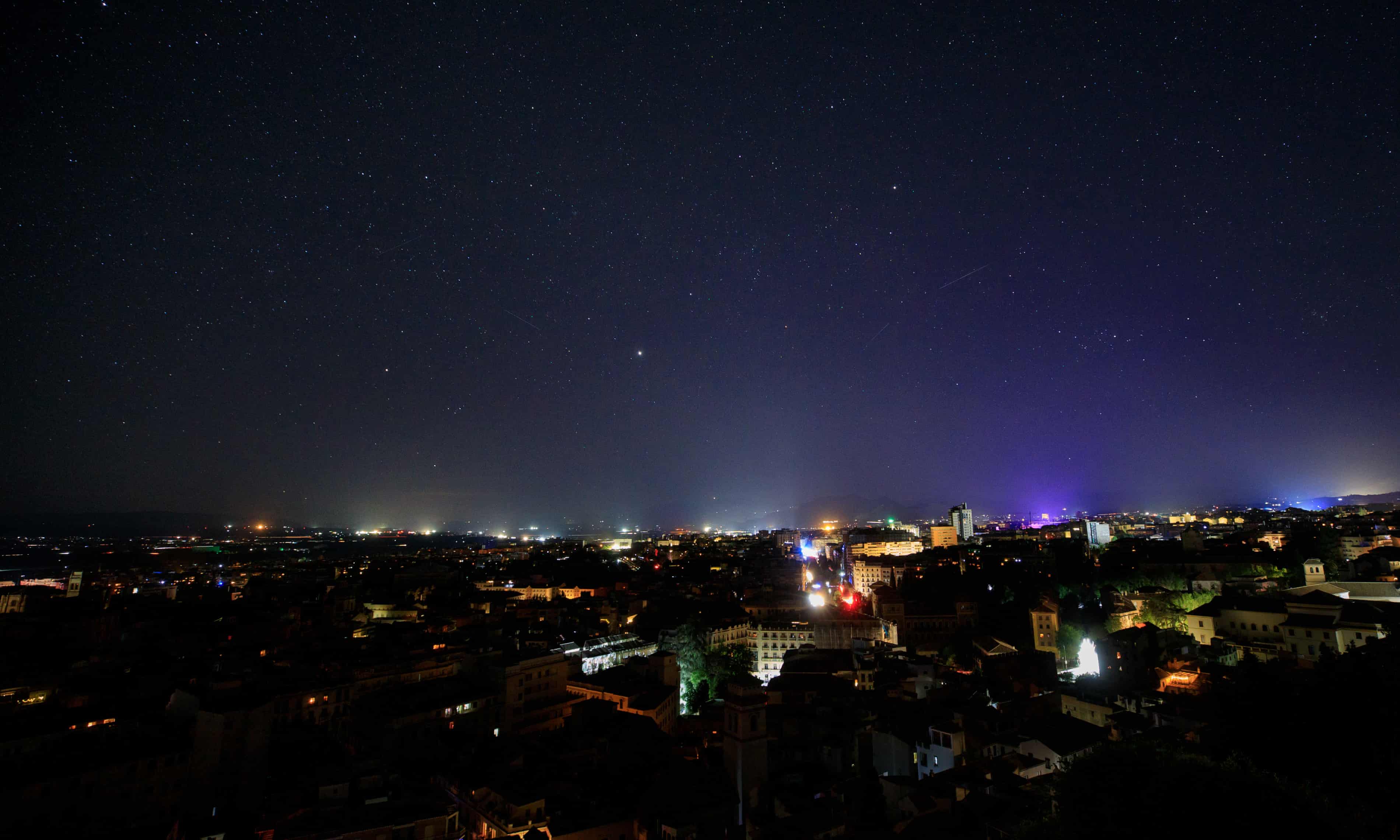Spain and Portugal Power Outage: Can European Countries Protect Their Energy Security?

“More than half of Spain’s electricity last year came from renewable energy.”
Spain, Portugal, and France experienced a widespread power outage this week, affecting approximately 58 million people and disrupting trains, airports, and communications.
Eduardo Brito, head of the Spanish electricity transmission company Red Electrica, attributed the outage to a severe power grid fluctuation that led to the disconnection of the Spanish energy system from the European system and the collapse of the electricity grid in the Iberian Peninsula.
The Spanish government has established an investigation into the causes of the widespread power outage in the Iberian Peninsula.
Spain's Supreme Court has opened an investigation into a possible cyberattack, while Teresa Ribera, Executive Vice-President for a Clean, Just and Competitive Transition, has ruled out this possibility.
Although there has been no official confirmation yet of a cyberattack or deliberate sabotage, the scale and spread of the power outage across Spain and Portugal have raised concerns among observers about the vulnerability of European energy networks, especially in light of the escalating risks associated with the war in Ukraine and global tensions over energy sources.
Power Outage
Portugal and Spain experienced a widespread power outage, described by authorities as significant and unprecedented in years.
Authorities in both countries declined to hypothesize as to what might have caused the imbalance in the power system.
Also in France, the electricity company confirmed that some homes in the Basque region experienced a brief outage before power was restored later, reinforcing the hypothesis that the problem was not limited to the Iberian Peninsula but extended to the borders of Western Europe.
The power outage in those areas began at 10:33 GMT on April 28 and disrupted public transport, traffic lights, and ATMs, as well as communications, amid general confusion.
In a later statement, Rene, the operator of Portugal's electricity grid, confirmed that it had activated emergency plans to gradually restore power in coordination with European companies.
On the afternoon of April 29, Red Electrica, the company that manages Spain's national electricity grid, announced that service was 99% restored, while the causes of the outage remained under investigation.
It described the incident as a European-wide problem, suggesting the possibility of a structural failure, a cyberattack, or a major technical failure.
Spain was forced to activate emergency measures and restart hydroelectric power plants across the country, importing power via giant cables from France and Morocco, which helped restore electricity to most of the northern and southern regions of the Iberian Peninsula.
In turn, Spanish Prime Minister Pedro Sanchez called an emergency meeting of the National Security Council at the presidential palace, a move that suggests the government fears the crisis is more than just a tech failure.
This is the largest blackout in European history, surpassing the 2003 power outage in Italy and Switzerland, which affected 56 million people and lasted for nearly 12 hours.
In November 2006, Europe also experienced one of its largest electricity crises, affecting approximately 10 million people — half of them in France and the rest in Germany, Belgium, Italy, Spain, and Portugal — and lasted for only 2 hours.
Last year, much of the Balkans was without power for several hours during a heat wave in which temperatures soared to 40 degrees Celsius.

European Energy
In the same context, the European Commission has begun communicating with national authorities in Spain and Portugal to understand the dimensions of the situation, in another indication that the crisis has gone beyond local concerns to take on a broader European dimension.
The recent power outage in Spain and Portugal has sparked widespread debate about the role of renewable energy in exacerbating the fragility of Europe's electricity grid infrastructure, especially with the increasing pressure on it due to the shift towards clean energy and away from traditional energy sources, such as coal and Russian gas.
The Telegraph quoted energy experts as saying that Spain's heavy reliance on solar and wind farms has made the region's energy grid vulnerable to such crises.
Data shows that Spain has witnessed a significant shift in its energy sources over the past two decades, with reliance on fossil fuels declining from 80% to less than 50%, while renewable energy increased to 50.3% by 2023.
Just prior to the blackout, solar farms provided approximately 53% of Spain's electricity, with an additional 11% coming from wind turbines.
The power outages in Spain and Portugal pose a significant challenge to European energy policy, especially as the European Commission pressures the Iberian Peninsula to better connect to Europe's grids, according to Politico.
Despite the expansion of renewable energy, the increasing reliance on cross-border grids makes the continent more vulnerable to shocks, whether technological, cyberattacks, or external tampering with infrastructure.
The recent incident served as a warning bell, as the widespread outage of the power grid, extending to three major countries, demonstrates that any disruption—no matter how minor—can turn into an immediate disaster, especially if it coincides with soaring temperatures or severe cold waves.

It is worth noting that European energy integration projects may enhance the continent's ability to overcome such crises, but at the same time, they may increase the likelihood of crises spreading more rapidly locally and regionally.
The European Network of Transmission System Operators for Electricity (ENTSO-E), officially established in 2009, plays a pivotal role in promoting energy independence and expanding European regional cooperation, especially after Ukraine and the Baltic countries joined it following their disconnection from the Russian electricity grid.
It also connects more than 35 countries in a synchronized electricity grid serving over half a billion people, with a total capacity exceeding 1,100 gigawatts.
Its importance extends beyond its service and technical dimensions to encompass political and strategic dimensions.
This grid embodies a model of cross-border infrastructure that strengthens continental unity, ensures the free flow of energy between member states, and works to standardize the electrical frequency at 50 Hz.
It also contributes to supporting the European Union's policies to shift toward renewable energy sources and reduce dependence on external sources to meet energy needs.
Last year, reports revealed that renewable energy sources accounted for 46.9% of the total net electricity produced in the EU.

Increasing Pressure
Initial reports attributed the recent power outage in parts of Europe to a rare phenomenon known as ‘induced atmospheric vibration’.
The Science Alert website provided information about this phenomenon, indicating that weather is the primary cause of the power outages.
Vibrations in power lines can also be caused by extreme changes in temperature or air pressure, and this is one hypothesis about what caused the recent widespread blackout across the Iberian Peninsula.
It's worth noting that 83% of reported power outages in the United States between 2000 and 2021 were attributed to weather-related events.
In fact, the term ‘induced atmospheric vibration’ is not a commonly used term, but it seems likely the explanation was intended to refer to physical processes climate scientists have known about for quite some time.
In simple terms, it seems to refer to wavelike movements or oscillations in the atmosphere, caused by sudden changes in temperature or pressure.
These can be triggered by extreme heating, large-scale energy releases (such as explosions or bushfires), or intense weather events.
The website stressed that it remains unclear whether this was the cause of the recent power outages in Europe.

However, it emphasized that as energy systems become more interconnected and more dependent on long-distance transmission, even relatively subtle atmospheric disturbances can have outsized impacts.
“The increasing electrification of buildings, the rapid uptake of electric vehicles, and the integration of intermittent renewable energy sources have placed unprecedented pressure on traditional grids that were never designed for this level of complexity, dynamism or centralisation,” it pointed out.
It also noted that the solution to avoiding such catastrophic risks is to promote local energy independence, which is essential for building a secure, affordable, and future-ready electricity system.












